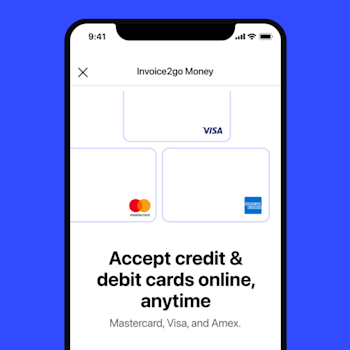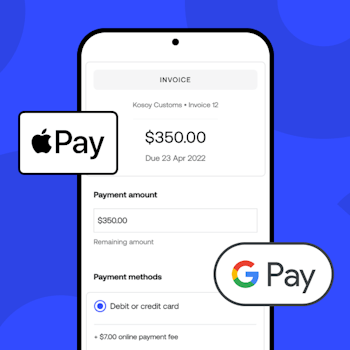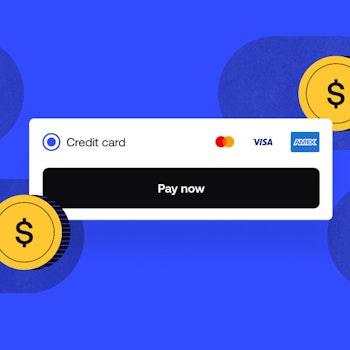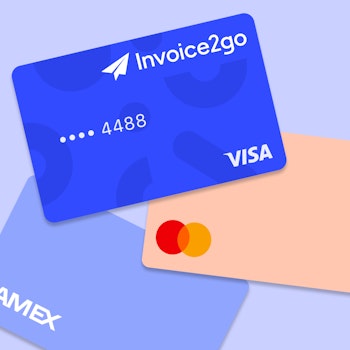
The 5 elements of an excellent small business newsletter
The quality of your communication determines the caliber of your relationships. Whether it’s communicating better with your life partner or writing a small business newsletter, your ability to express yourself effectively dramatically affects the results.
If you’re looking to grow your business, check this out. In a recent Business Masterclass Live, expert consultant, Mike Claudio, shared a crucial insight: the top reason quality companies don’t grow is communication mistakes.
It’s essential to keep in mind that communication comes in all forms. It’s everything from how you greet customers in person to the writing on your website and in your emails. It plays an indispensable role in attracting prospects, building loyalty, and making it a pleasure for clients to pay for your services.
We know you’re an expert in your field. When you’re on the job, you’re going to deliver top-quality work. However, have you recently taken the time to assess how you can improve your marketing and overall communication?
We’re ramping up our efforts to supply you with valuable business tips. We want to go beyond empowering you with a straightforward app. We want to inspire you and give you actionable steps you can take to get the results your business deserves.
A newsletter is a great way to improve communication with your customers. With this guide, you’ll be able to share effective content in no time – even if you’re not a great writer or if you’ve never sent an email to your customers before.
We’re going to review some information on building a marketing strategy and share how a newsletter fits into the bigger picture. Then we’ll share the 5 essential elements you need to ensure your newsletter makes a strong impact.
Whether you’re just starting out or if you’ve been running your own company for decades, there’s something here for you. Let’s dive in:
Why do you need a small business newsletter?
A newsletter is one aspect of your marketing strategy. Here’s an eye-opening statistic: 50% of small businesses have no marketing plan. If your business doesn’t have one yet, don’t worry – you’re not alone. You also have low-hanging fruit to win more business.
Our marketing guru, Natalee Brown, recently shared 8 steps to better small business marketing. If you haven’t watched this yet, it has a wealth of useful information for setting up a strategy.
Email marketing is perhaps the most cost-effective way to reach out to prospects and build relationships with them. If you’d like resources on how to get started with email marketing, we also have a video masterclass on that topic.
A newsletter is one of the most important emails you’ll regularly send customers. Here’s why it’s worth your time even if you’re busy or don’t consider yourself a writer:
Your customers check their email every day
The average person checks email 15 times per day. This means that if you send engaging material, your customers will read it. In fact, a well-timed, high-quality email will be welcomed.
Built rapport and credibility with those who want to do business with you
Perhaps you’ve already been collecting email addresses through your website or Invoice2go, a Bill.com company, app. Now’s your chance to use that information to build stronger relationships.
Newsletters can do this in many ways. Here are just a few examples:
- You can share photos of recent projects, useful tips, or a peek behind the scenes of your business. Generously sharing knowledge and entertaining information builds trust and loyalty. When your audience is engaged, you’re likely to see sales go up.
- Want to know more about what your customers want and how to serve them better? Put in a survey. You can get direct customer feedback and use this information to give your company an edge.
By consistently showing up in your customers’ inboxes with content that speaks to their needs, you’ll stay top of mind. They’ll be more ready to reach into their wallets when they need your help.
It’s also one of the most inexpensive ways to connect. Running ads in the local paper can add up. Even paid social media marketing can get costly. An email newsletter requires only the time it takes to write it, and potentially the cost of your business email service. Email return on investment is typically twice as high as other digital marketing channels.
It’s easy to get started and to measure your success
While it might seem daunting to make time to sit down and write when you’re already busy, it’s easier than you think. Email services have a variety of templates to help you. Once you get set up, you can reuse your template each month and just change the content.
Note: Email service providers also help you create and automate welcome emails that go to your new subscribers.
Once your email is sent, you can review the metrics on its performance. You can see how many people opened your message and clicked links in it. This makes it easy to measure your success and get a clear picture of what content your customers appreciate. Over time you’ll learn how to send the best information at the perfect time.
Now that you see the value of a newsletter, we hope you’re willing to give it a shot. Here’s how to create an effective one quickly:
What are the essential elements of a winning newsletter?
First, always keep in mind the goal of your newsletter: to entertain, educate, inspire, or convince. This is not a place to hard-sell your services.
Every business is different, and newsletters can vary significantly. However, they all have these 5 essential elements in common.
1. Write a subject line that gets your email opened
Your subject line is one of the most important sentences. If this short phrase doesn’t catch your reader’s eye, your message won’t get read. Because people get so many emails these days, the line “August Monthly Newsletter” probably won’t get opened. You need to be more creative.
It can be challenging to write an eye-catching subject line at first, but here are some tips to help you:
- The best subject lines are typically 30-50 characters long. These days more people check email on mobile devices, and long subject lines can get clipped.
- Avoid words that get your messages marked as spam. Words like “Free” or “Buy Now” can prevent your message from being delivered. Be sure to check out a spam list like this one.
- Use a tool like CoSchedule’s Subject Line Tester. This is a great way to optimize your subject lines and get instant feedback.
Remember, even though it’s just one sentence, take your time and write several versions of it. One trick that works for many professionals is to set a timer for 10 minutes and jot down as many subject lines as possible. Then go back and pick the one that stands out to you the most.
2. Share engaging, useful, and entertaining content
Be careful: Aim to come across like a knowledgeable leader, not an annoying salesperson. Put yourself in your readers’ shoes. Is this a message you’d like to receive from a business?
Focus on engaging your customers by giving them value. Think about what would be most interesting to them in connection with your company. Think about the questions you get most often, helpful tips, resources, and industry trends you can share. Here are some ideas to get you started:
Your latest news and company highlights
What’s happened this month? Have you introduced a new service or completed an exciting project?
Don’t be shy about sharing what’s happening in your business’ world. Keep your language friendly, straightforward, and human. Try using bullet points to make your content easy for your readers to skim and digest.
Also, keep in mind that your customers may not understand industry jargon. If you use any technical terms, be sure to explain them.
Talk about upcoming special events
Connect your business to seasons, holidays, and special events in your community. For example, for construction companies, you could share the best times to do different remodeling projects.
You could share quotes, jokes, or anecdotes connected to holidays or happenings coming up in your community. If your business is hosting a special event or sale, you could give the details or provide a link to sign up.
Share customer feedback
Responding promptly to customer feedback is a great way to stand out. What have you been hearing about lately from your customers? As a small business owner, chances are you wear many hats in your day-to-day operations. Use your newsletter to answer common questions or share testimonials from review sites like Yelp.
You can also embed surveys into your newsletter to get direct customer feedback. To encourage engagement, you can include a participation prize like a gift card or discount. Don’t forget to share your survey results in your next newsletter.
Tips, guides, and resources
Provide your readers with useful information. Share best practices or review products you use on the job. Consider making short how-to videos. If you notice your customers are making common mistakes, share how to correct them.
This may seem like you’re giving away free expertise, but there is a ton of value here. Giving great advice will help you build trust and customer loyalty.
Spotlight an employee or customer
Many people enjoy behind-the-scenes looks at their favorite local businesses. An employee or client profile can help bring you closer to your community. For example, if you just completed reflooring someone’s home. Take pictures and write up the client’s story.
Guest posts
For us at Invoice2go, we often have guest speakers share advice in our Facebook groups. Consider getting other professionals in your network to share tips in your newsletter.
There is a bonus here: Asking people in your network to contribute can help you establish stronger professional relationships.
Provide discounts or special offers
While it’s best to avoid hard-selling, occasionally offering a special discount to your subscribers is wise.
Consider email-only promotions. Thank them for subscribing to your list and let them know how much you appreciate that they follow you. You can incentivize word-of-mouth about your business by encouraging your readers to share the email with friends and family interested in discounted services.
Here are some examples of newsletters that we hope will inspire you.
3. Make your newsletter visually appealing
You’re a professional, and your emails should reflect that. Formatting your email to look great, and adding eye-catching images will improve your success rate.
When your content looks great, people will pay more attention and remember more of what you have to say. Just be careful of copyright laws. Be sure to take your own photos or use a resource like this to get stock photos.
To save time, we recommend using email templates like the ones MailChimp provides. These will help you create a great-looking message in no time.
4. Make sure your writing is easy to read
If you’re not a confident writer, here’s good news: simple is best. You don’t want to use long sentences or complicated language. Write in a friendly way – not like a robot – and use a service like Grammarly to make sure there are no typos or spelling mistakes.
Use bullet points and short paragraphs. Take a little extra time to proofread your work. Even if your readers aren’t consciously aware of it, reading material with lots of mistakes will cause them to lose trust.
5. Go for just one main call-to-action
When you sit down to write your letter, think about its primary goal for that month. Do you want customers to give you feedback? Do you want them to read a new blog post or watch a video?
Make your call-to-action easily visible – either at the top of your letter or in larger text. While it is OK to have secondary calls-to-action, have those be smaller or lower down in your message. Competing CTAs can confuse your reader or have them take action on items that are less important for you.
Keep in mind: all of this requires time and experimentation. Don’t expect your first email to be a massive success. This is a marathon, not a sprint. Over time, you will learn more about your customers and types of content they appreciate.
Writing newsletters doesn’t have to be grueling, and we find that many come to enjoy this task once they get started. With this guide’s help, we hope to save you time and ensure you’re delivering superb content. Despite the rise of social media, email is still one of the most personal and direct ways to connect with your customers.
If you want to know exactly how to set up and send out your newsletter with email marketing service, MailChimp. Check out our article that explains how to do that step-by-step here.
Want to get feedback from our community about your newsletter? Join our Facebook groups to share and pick up more valuable tips and tricks for your business.
Related Articles

How to accept credit card payments on Invoice2go in 3 simple steps

Accept payments online via Apple Pay and Google Pay

Must-not-miss write-offs as you wrap up 2022 year-end finances

5 ways accepting credit and debit card payments helps your business stay resilient

4 easy ways to increase cash flow today

What is Small Business Saturday and why is it important?
The features and surprising benefits of a well-designed packing slip
